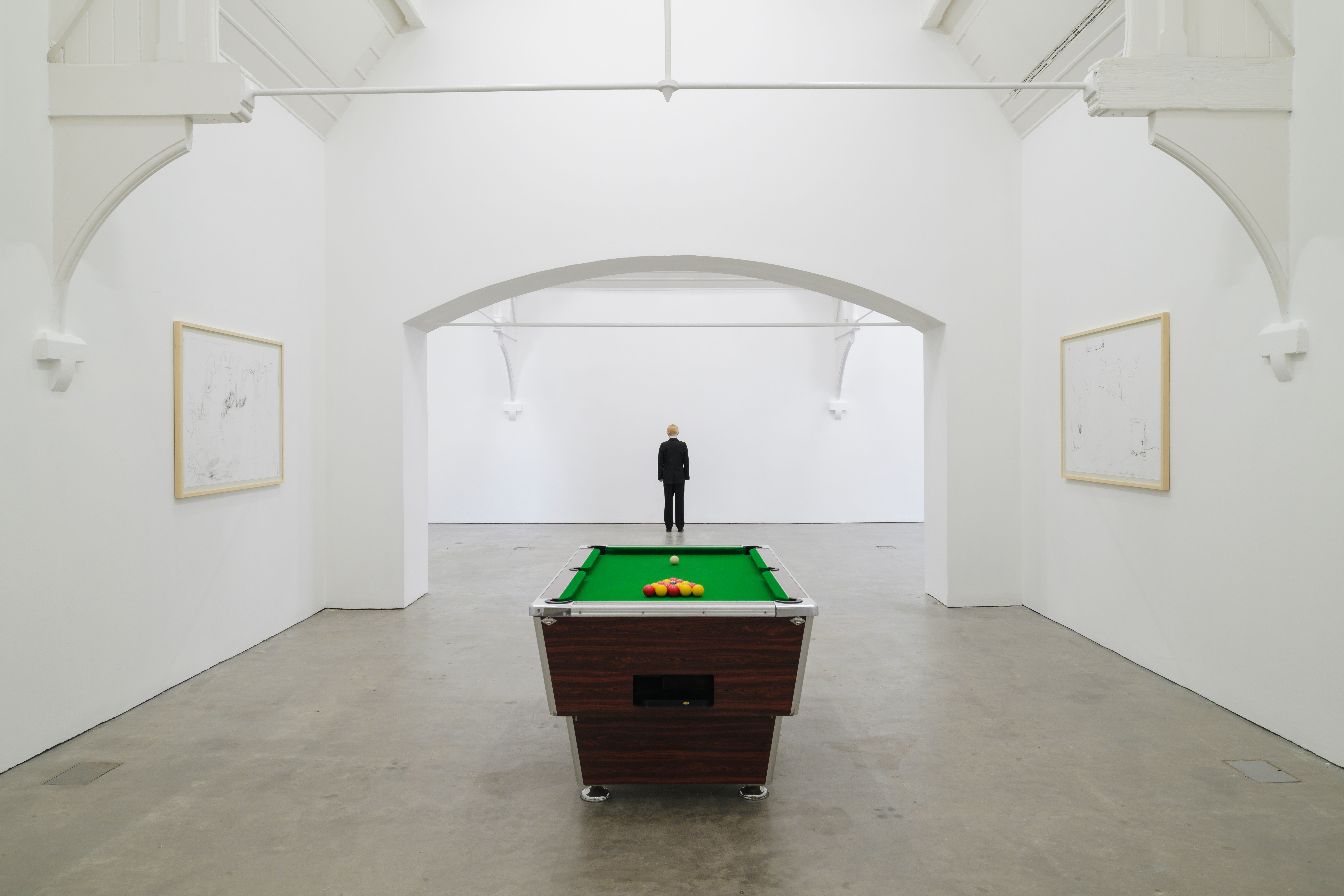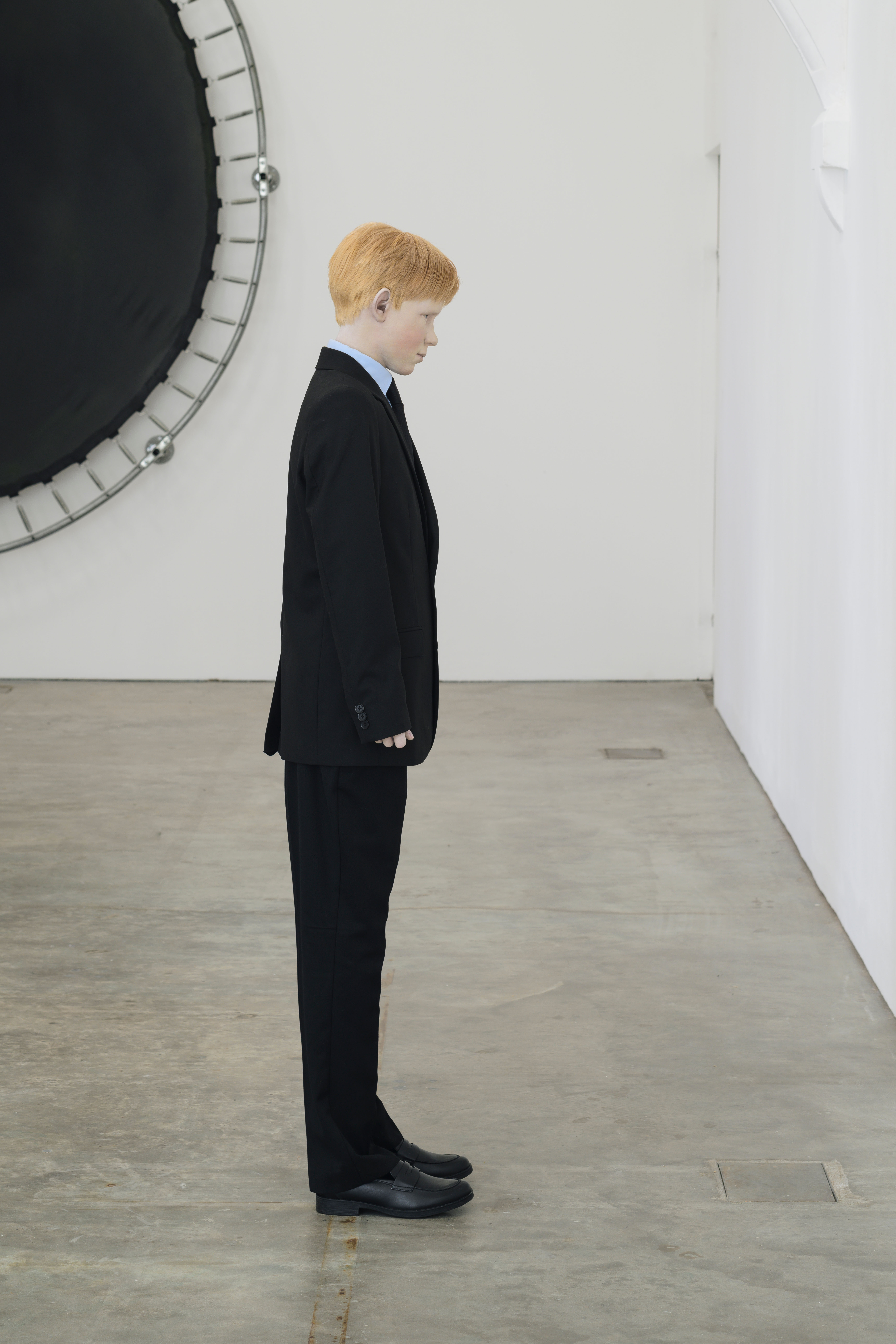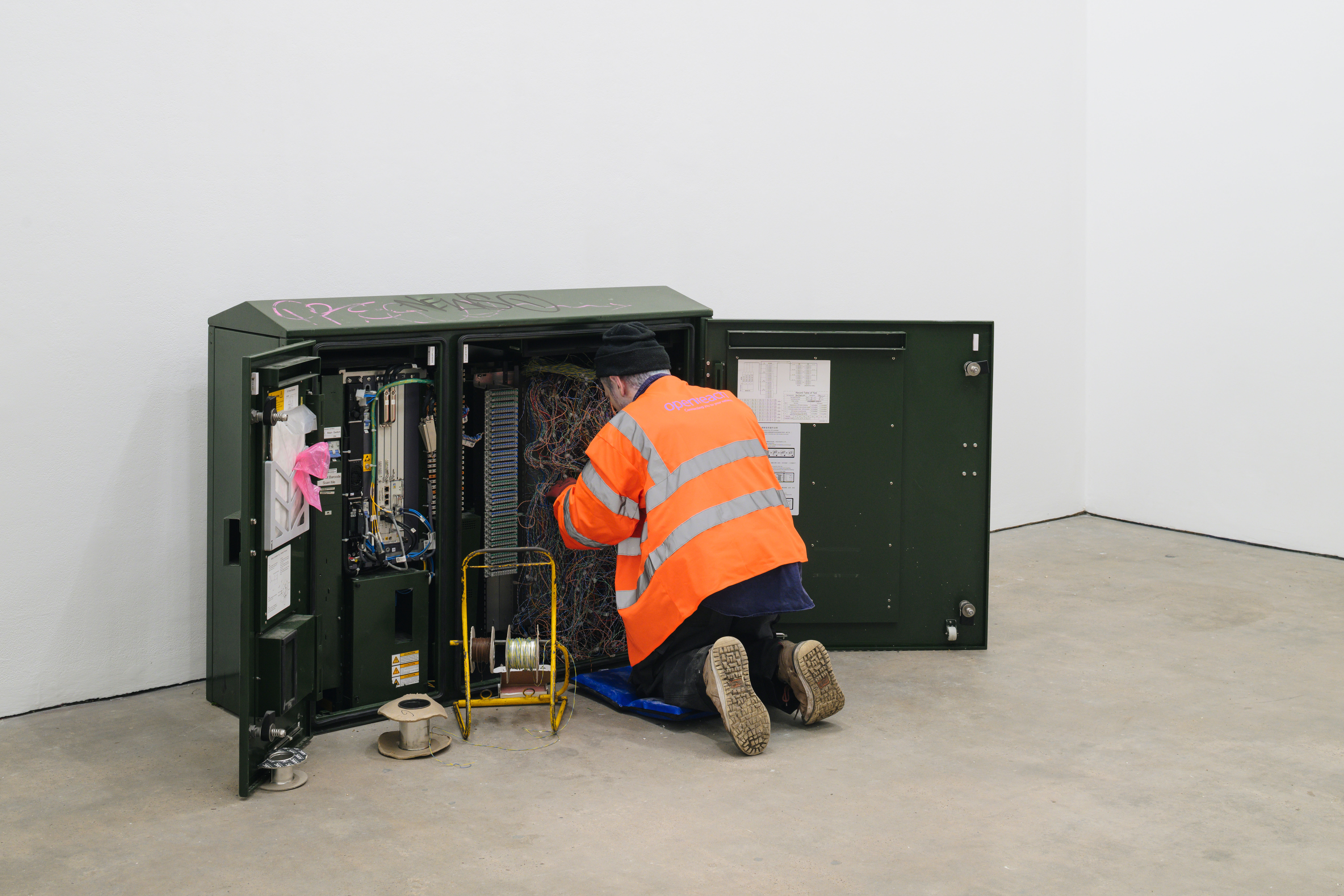Dion Kitson
-
Interview by Linzi Stauvers
-
Published in September 2024
-

Dion Kitson at J.W. Evans Silver FactoryImage courtesy English Heritage. Photo by Tom Bird
Your catalogue covers not one but two exhibitions in Birmingham; Rue Britannia at Ikon Gallery in Brindleyplace and Silver Lining at JW Evans Silver Factory in the Jewellery Quarter. Both venues date back to the late nineteenth century when industrial design was burgeoning in the city. What interests you about the Victorian era and how do you reflect it in your work?
The Victorians took so much pride in their architecture, building cathedrals to trade and industry. Every town in the Midlands had a beautiful red brick art school – Brierly Hill, Dudley, Stourbridge – because the Victorians believed in art as a carrier of social value. They used the spoils of Empire to address social issues at home, clearing the slums to create the public realm. With the current degradation and privatisation of these spaces, I’m asking what it was all for? Hence the title ‘Rue Britannia’ – ‘rue’ meaning ‘to regret’.

Rue Britannia by Dion Kitson. Installation view at Ikon Gallery 2024. Image courtesy Ikon. Photo by Tom Bird.
Ikon is housed in a neo-gothic school building, originally designed by John Henry Chamberlain in 1877, the interior of which was converted into a modernist gallery in late 1997. What does the white cube mean to you? Is it a neutral space?
Well, again, it’s interesting this trend for converting Victorian schools, prisons and factories into white-walled galleries, high-end restaurants and luxury apartments in order to re-birth the economy. Reimagining industrial parts of the city as areas of affluence. I suppose being working class has meant that I’ve always aspired to exhibiting in ‘the white cube’. It gives me visual clarity and allows me to connect with the minimal and conceptual art movements of the 1960s. Before the Second World War, museums were wallpapered and carpeted, not dissimilar to displaying your work at home; on a staircase, a kitchen table, in the garden or a garage. I feel honoured to be showing my work in a more neutral space.
The JW Evans Silver Factory is under the custodianship of the English Heritage. The workshop is organised around the original metalworking equipment used to mass-produce affordable silverware. It also contains the personal belongings of the workers from the early 2000s, including coffee mugs and newspaper cuttings. How have you played with the history contained within the museum?
The silver factory is strange because it feels very antiquated and modern at the same time. What English Heritage does curatorially is not far removed from what I do artistically. They find a heritage space and feel the need to conserve it. Walking down the street, I’ll find a deflated football and feel the need to keep it. You have this strong sense of duty to take care of the building/object. Once you have collected a hundred discarded footballs, you have an artwork. Seeing something on a large scale makes you think about mass production and the cheap labour behind it. It amazes me how far removed we are from these dangerous industrial processes – which is not a thing of the past, but outsourced to other parts of the world – involving horrific working conditions, injuries and illnesses. It’s important to remember when you buy some antique silverware, a child probably lost a finger to make that.

Shelves full of stamps, patterns and dies. When the factoryfinally closed in 2008, it was conserved as found by EnglishHeritage, so that visitors could continue to experience this industry as the workers at J. W. Evans did. Image courtesy of English Heritage.
The two exhibitions are connected by a cast of characters, most notably Tin Man and Dorothy Gale from The Wizard of Oz. How does this serve to reveal your artistic vision of the city as a playground, where objects become anthropomorphised and streets become epic narratives?
It's funny because when you're like seven, you pretend to be the Scarecrow in The Wizard of Oz in the back streets of Dudley. You have all these adventures and invent different scenarios for play. Fast forward twenty years and you’re still dressing up as Dorothy or casting yourself as the Tin Man. I like the feeling of positioning myself as another person, another artist, to explore the world and find meaning. It’s like Elton John’s album Goodbye Yellow Brick Road (1973) in which he identifies with Dorothy to enact a place of innocence, returning home, entering/exiting a fantasy land. I did a spray painting in Birmingham’s Gay Village of Dorothy, throwing her ruby red slippers over a telegraph wire, for Channel 4.

Rue Britannia by Dion Kitson. Installation view at Ikon Gallery 2024. Image courtesy Ikon. Photo by Tom Bird.
Members of the Royal Family feature in the exhibitions, including a cardboard cut-out of Princess Diana and a 3D-printed statue of Prince Harry. It is interesting how you’re portraying different generations using old and new technologies. Why do you work across different media?
I never quite understood why I got asked to choose sculpture or painting at art school. It's like, why would you choose? You know, there's room for everybody to do everything. There are thousands of different ways to achieve the same result. Hence, when you’re working on different projects you need to be economical, particularly with time. How can you produce an immediate result? It's about the speed and pace of the work’s production. I can’t access the real Prince Harry. I can only access him in the digital sphere and, by 3D printing him, I made him real. In contrast, for the Tin Man, I simply cast my own face. A similar effect/illusion, but using a quicker and more economical process.

Rue Britannia by Dion Kitson. Installation view at Ikon Gallery 2024. Image courtesy Ikon. Photo by Tom Bird.
The worker that is absent from Silver Lining is made corporeal in Rue Britannia; most notably in Ill Communication (2024), with a 3D printed figure kneeling in front of a green BT box. You’ve previously described the worker, dressed in a beanie hat and high vis jacket, as being engaged in an act of worship before a shrine to global communication.
There’s a line in Elton John’s Rocket Man (1972) in which he says “And all the science I don't understand. It's just my job five days a week.” This is the figure who doesn’t really understand what he’s doing, it’s just his job to do it. Is he fixing the box? Or is he kneeling before it? Perhaps he’s just accepting of his position in relation to it.
-
Rue Britannia is an exhibition at Ikon Gallery, and runs between 10 May – 8 September 2024
Silver Lining is a commission presented at J W Evans Silver Factory, Birmingham and runs between 11 May – 6 September 2024.
-
︎ @dionkitson
dionkitson.com
︎ @ikongallery
ikon-gallery.org
-
If you like this why not read our interview with Jude Wainwright.
-
© YAC | Young Artists in Conversation ALL RIGHTS RESERVED
